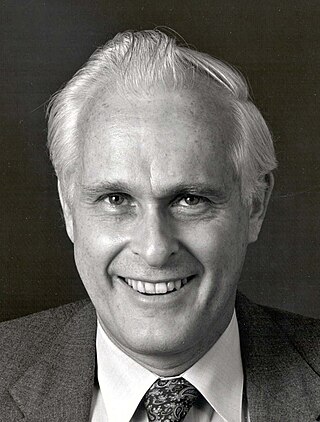Related Research Articles

The Universal Product Code is a barcode symbology that is widely used worldwide for tracking trade items in stores.

A barcode or bar code is a method of representing data in a visual, machine-readable form. Initially, barcodes represented data by varying the widths, spacings and sizes of parallel lines. These barcodes, now commonly referred to as linear or one-dimensional (1D), can be scanned by special optical scanners, called barcode readers, of which there are several types. Later, two-dimensional (2D) variants were developed, using rectangles, dots, hexagons and other patterns, called matrix codes or 2D barcodes, although they do not use bars as such. 2D barcodes can be read using purpose-built 2D optical scanners, which exist in a few different forms. 2D barcodes can also be read by a digital camera connected to a microcomputer running software that takes a photographic image of the barcode and analyzes the image to deconstruct and decode the 2D barcode. A mobile device with a built-in camera, such as smartphone, can function as the latter type of 2D barcode reader using specialized application software.

The Cranberries were an Irish rock band formed in Limerick, Ireland. Originally named the Cranberry Saw Us, the band was formed in 1989 by lead singer Niall Quinn, guitarist Noel Hogan, bassist Mike Hogan, and drummer Fergal Lawler. Quinn was replaced as lead singer by Dolores O'Riordan in 1990 and they changed their name to the Cranberries. The band classified themselves as an alternative rock group, but incorporated aspects of indie rock, jangle pop, dream pop, folk rock, post-punk and pop rock into their sound.
An International Securities Identification Number (ISIN) is a code that uniquely identifies a security globally for the purposes of facilitating clearing, reporting and settlement of trades. Its structure is defined in ISO 6166. The ISIN code is a 12-character alphanumeric code that serves for uniform identification of a security through normalization of the assigned National Number, where one exists, at trading and settlement.

Code 39 is a variable length, discrete barcode symbology defined in ISO/IEC 16388:2007.
ISO 10962, generally known as CFI, is a six-letter-code used in the financial services industry to classify and describe the structure and function of a financial instrument. It is an international standard approved by the International Organization for Standardization (ISO). Since 1 July 2017, each financial instrument should receive a CFI at the same time it is allocated an ISIN by the respective NNA.

A cosmopolitan, or, informally, a cosmo, is a cocktail made with vodka, Cointreau, cranberry juice, and freshly squeezed or sweetened lime juice.

PDF417 is a stacked linear barcode format used in a variety of applications such as transport, identification cards, and inventory management. "PDF" stands for Portable Data File. The "417" signifies that each pattern in the code consists of 4 bars and spaces in a pattern that is 17 units (modules) long. The PDF417 symbology was invented by Dr. Ynjiun P. Wang at Symbol Technologies in 1991. It is defined in ISO 15438.

A QR code is a type of two-dimensional matrix barcode, invented in 1994, by Japanese company Denso Wave for labelling automobile parts. A barcode is a machine-readable optical image that contains information specific to the labelled item. In practice, QR codes contain data for a locator, an identifier, and web tracking. To efficiently store data, QR codes use four standardized modes of encoding (i) numeric, (ii) alphanumeric, (iii) byte or binary, and (iv) kanji.
Cranberry Portage is an unincorporated community recognized as a local urban district located in the Rural Municipality of Kelsey, Manitoba. It was an important part of the pre-European contact trade routes of the Cree and Assiniboine peoples. Long before the fur trade with the Bay and during the Fur Trade, this location was used as a campsite and portage between Grassy River, at the head of a number of well-used routes from Hudson Bay, and Lake Athapapuskow, which connected to the Saskatchewan River system. Once on the Saskatchewan routes were open through the prairies to the foothills of the Rocky Mountains.
Automatic identification and data capture (AIDC) refers to the methods of automatically identifying objects, collecting data about them, and entering them directly into computer systems, without human involvement. Technologies typically considered as part of AIDC include QR codes, bar codes, radio frequency identification (RFID), biometrics, magnetic stripes, optical character recognition (OCR), smart cards, and voice recognition. AIDC is also commonly referred to as "Automatic Identification", "Auto-ID" and "Automatic Data Capture".

The Chartered Trading Standards Institute (CTSI) is a professional association which represents and trains trading standards professionals working in local authorities, business and consumer sectors and in central government in the UK and overseas.

Bag tags, also known as baggage tags, baggage checks or luggage tickets, have traditionally been used by bus, train, and airline carriers to route checked luggage to its final destination. The passenger stub is typically handed to the passenger or attached to the ticket envelope:
- to aid the passenger in identifying their bag among similar bags at the destination baggage carousel;
- as proof—still requested at a few airports—that the passenger is not removing someone else's bag from the baggage reclaim hall; and
- as a means for the passenger and carrier to identify and trace a specific bag that has gone astray and was not delivered at the destination. The carriers' liability is restricted to published tariffs and international agreements.

GS1 is a not-for-profit, international organization developing and maintaining its own standards for barcodes and the corresponding issue company prefixes. The best known of these standards is the barcode, a symbol printed on products that can be scanned electronically.

The International Article Number is a standard describing a barcode symbology and numbering system used in global trade to identify a specific retail product type, in a specific packaging configuration, from a specific manufacturer. The standard has been subsumed in the Global Trade Item Number standard from the GS1 organization; the same numbers can be referred to as GTINs and can be encoded in other barcode symbologies defined by GS1. EAN barcodes are used worldwide for lookup at retail point of sale, but can also be used as numbers for other purposes such as wholesale ordering or accounting. These barcodes only represent the digits 0–9, unlike some other barcode symbologies which can represent additional characters.
Codabar is a linear barcode symbology developed in 1972 by Pitney Bowes Corp. It and its variants are also known as Codeabar, Ames Code, NW-7, Monarch, Code 2 of 7, Rationalized Codabar, ANSI/AIM BC3-1995 or USD-4. Although Codabar has not been registered for US federal trademark status, its hyphenated variant Code-a-bar is a registered trademark.

David Allais is an American expert and inventor in the fields of bar coding and automatic identification and data capture. As vice president and later president and chief executive officer of Everett, Washington-based Intermec Inc. (NYSE:IN), he built the company from a small startup into the leading manufacturer of bar code and printing equipment. Prior to Allais' role at Intermec, he served as a manager for IBM. Most recently, Allais founded PathGuide Technologies, a Bothell, Washington-based developer of warehouse management systems for distributors.
The Health Industry Business Communications Council (HIBCC) is a primary standard-setting and educational organization for healthcare bar coding in the United States. It provides publications, trade shows, educational resources, conferences and training programs.
ISO/IEC JTC 1/SC 31 Automatic identification and data capture techniques is a subcommittee of the International Organization for Standardization (ISO) and the International Electrotechnical Commission (IEC) Joint Technical Committee (JTC) 1, and was established in 1996. SC 31 develops and facilitates international standards, technical reports, and technical specifications in the field of automatic identification and data capture techniques. The first Plenary established three working groups (WGs): Data Carriers, Data Content, and Conformance. Subsequent Plenaries established other working groups: RFID, RTLS, Mobile Item Identification and Management, Security and File Management, and Applications.

David Jarrett Collins was an inventor and businessman whose career was focused on bringing barcode technology into the mainstream. While at Sylvania in 1960, he led a team that developed the first functional barcode system for tracking railroad cars, and subsequently worked on developing laser barcode systems.
References
- ↑ "About AIM". AIM. Retrieved April 7, 2013.
- ↑ Leonard, Kim (March 14, 2013). "Cranberry trade group turns 40 with ubiquitous bar code". Pittsburgh Tribune-Review . Retrieved April 17, 2013.